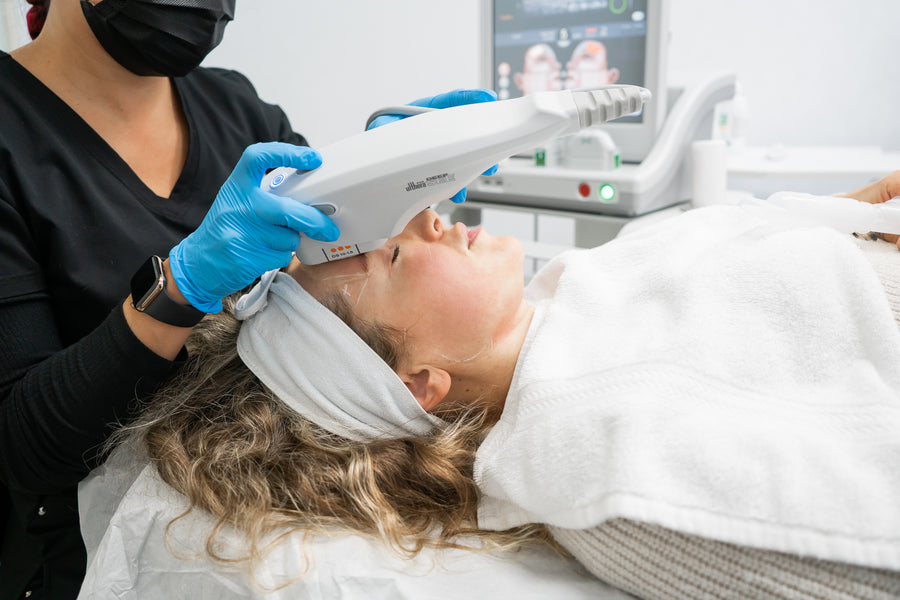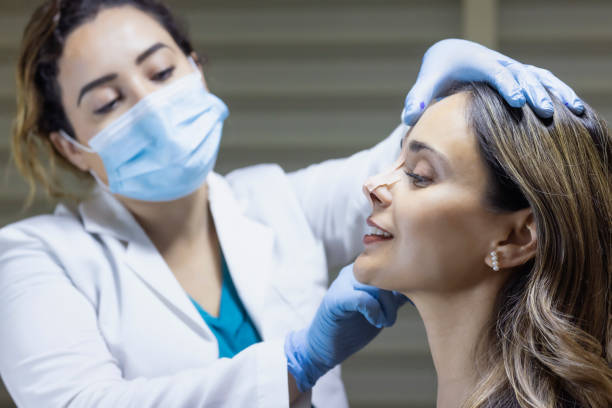In the realm of non-invasive skin tightening treatments, Ultherapy in Abu Dhabi has gained significant recognition for its effectiveness and safety profile. As individuals seek skin rejuvenation solutions that require minimal downtime, Ultherapy presents an appealing option by harnessing innovative technology to stimulate natural collagen production. This treatment is particularly sought after for its ability to lift and tighten skin on areas such as the face, neck, and décolletage. Understanding how Ultherapy works to encourage collagen synthesis can help prospective patients make informed decisions about their aesthetic goals.
The Science Behind Collagen and Skin Elasticity
What Is Collagen and Why Is It Important?
Collagen is a vital protein that provides structural support to the skin, maintaining its firmness and elasticity. As we age, collagen production naturally declines, leading to sagging skin, fine lines, and wrinkles. This decrease impacts the skin’s ability to bounce back and maintain a youthful appearance. Modern aesthetic treatments aim to counteract this process by stimulating the body’s own collagen production, thereby restoring skin’s firmness over time.
How Collagen Production Declines Over Time
Factors such as aging, sun exposure, lifestyle choices, and environmental stressors contribute to the gradual reduction of collagen fibers. As collagen diminishes, skin loses its structural integrity, resulting in signs of aging. This natural progression underscores the importance of treatments like Ultherapy that aim to boost collagen synthesis and improve skin resilience.
How Does Ultherapy Stimulate Collagen Production?
The Technology Behind Ultherapy
Ultherapy employs focused ultrasound energy to target deep layers of the skin without damaging the surface. This technology delivers precise thermal energy to the foundational layers where collagen is produced, effectively prompting the skin’s natural healing response. The targeted ultrasound waves generate controlled micro-injuries that stimulate the production of new collagen fibers.
The Biological Response to Ultrasound Energy
When ultrasound energy heats the deep skin layers, it triggers a biological response known as wound healing. This process involves the activation of fibroblasts, the cells responsible for producing collagen and other extracellular matrix components. As fibroblasts become stimulated, they increase collagen synthesis, leading to gradual tightening and lifting of the skin over subsequent months.
The Role of Heat in Collagen Remodeling
The thermal effect from ultrasound energy causes immediate collagen contraction, which results in an instant skin tightening effect. However, the primary goal is to induce neocollagenesis—new collagen formation—by stimulating the skin’s natural regenerative processes. This gradual remodeling enhances skin firmness, texture, and elasticity over time.
The Process of Collagen Regeneration Post-Ultherapy
Timeline of Collagen Development
Following an Ultherapy session, the body begins to produce new collagen within a few weeks. The process peaks around three to six months post-treatment, during which patients notice continued improvements in skin tightness and contour. The results are cumulative, making Ultherapy a long-lasting solution for skin rejuvenation.
Factors Influencing Collagen Production
Individual factors such as age, skin condition, lifestyle, and genetic predispositions can affect the rate and quality of collagen regeneration. Consistent skincare routines and sun protection can support and prolong the benefits of Ultherapy, maintaining skin’s youthful appearance for extended periods.
Benefits of Collagen Stimulation Through Ultherapy
Non-Invasive and Comfortable Procedure
Ultherapy offers a non-invasive alternative to surgical facelifts, with minimal discomfort and no need for anesthesia. The procedure typically involves a series of targeted ultrasound pulses, which are generally well-tolerated by patients.
Long-Lasting Results
Because Ultherapy stimulates the body’s own collagen production, the results can last for several months to years, depending on individual factors and lifestyle choices. The natural approach to rejuvenation ensures a harmonious, authentic appearance.
Natural Results and Gradual Improvement
Unlike some treatments that produce immediate but artificial-looking results, Ultherapy promotes gradual enhancement, allowing for subtle, natural-looking improvements. This makes it an attractive option for those seeking a refined, refreshed appearance without dramatic changes.
Maintaining and Enhancing Collagen Levels
Complementary Skincare and Lifestyle Tips
To support ongoing collagen production, patients are encouraged to follow a healthy skincare regimen that includes antioxidants, peptides, and sun protection. Lifestyle choices such as maintaining hydration, avoiding smoking, and managing stress can further help preserve skin elasticity.
Combining Ultherapy with Other Treatments
For enhanced results, Ultherapy can be combined with other non-invasive procedures like dermal fillers or skin resurfacing treatments. These combined approaches can address multiple signs of aging and optimize overall skin health.
Conclusion: The Power of Ultherapy in Achieving Youthful Skin
In summary, Ultherapy Abu Dhabi stands out as a scientifically-backed, non-invasive treatment that effectively stimulates collagen production for skin tightening and lifting. By targeting deep tissue layers with focused ultrasound energy, it kick-starts the body’s natural collagen regeneration process, leading to long-lasting, natural-looking results. As technology advances and understanding of skin biology deepens, Ultherapy continues to be a preferred option for individuals seeking a safe and effective path toward youthful, resilient skin.
FAQs About Ultherapy and Collagen Production
1. How long does it take to see results from Ultherapy?
Results typically begin to appear within a few weeks post-treatment, with full effects developing over three to six months as new collagen forms and skin continues to tighten.
2. Is Ultherapy suitable for all skin types?
Ultherapy is generally safe for most skin types. However, a consultation with a qualified practitioner can help determine suitability based on individual skin condition and aesthetic goals.
3. How often should I undergo Ultherapy to maintain collagen levels?
While results can last for years, maintenance treatments might be recommended every 1-2 years to sustain optimal collagen production and skin firmness.
4. Can Ultherapy be combined with other skin rejuvenation treatments?
Yes, Ultherapy can be effectively combined with procedures such as dermal fillers, chemical peels, or laser treatments to enhance overall skin health and aesthetic outcomes.







0 Comments